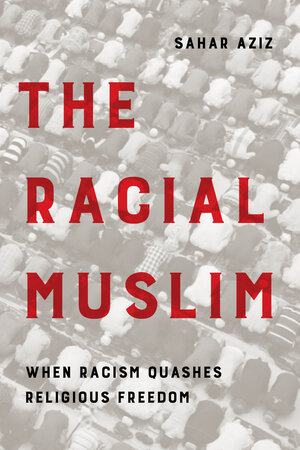By Sahar Aziz, author of The Racial Muslim: When Racism Quashes Religious Freedom
On his first day in office, President Biden repealed the “Muslim Ban,” an executive order issued by Trump on January 27, 2017. This repeal was a welcome development for the hundreds of thousands of Muslims whose lives have been put on hold and families separated. And yet, it is a small step in addressing the long history of exclusion of immigrant Muslims from the United States.
In the early 1900s, scientific racism grounded in the eugenics movement labeled people from the Middle East and North Africa as “Mohametan Turks.” Proponents of scientific racism saw followers of the Islamic religion as an inferior race that was despotic, uncivilized, and licentious. As a result, these Muslims were legally raced as “Asiatics” and thereby ineligible for citizenship reserved only for “free white persons” pursuant to the Naturalization Act of 1790. Cultural importation of European Orientalism also contributed toward Americans’ views of Muslim societies as backward and racially inferior—similar justifications for excluding immigrants from China, Japan, and other Asian countries. It was not until immigration laws changed starting in 1943 when Muslims from the Middle East, North Africa, and Asia were able to legally immigrate (in small numbers) and become U.S. citizens. In 1965, U.S. law was finally amended to lift strict quotas limiting immigration from outside of Northern and Western Europe.
When Trump issued his Muslim Ban in 2017, many Americans were outraged (and protested across the country) at such blatant religious bigotry that seemed to contradict America’s commitment to religious freedom. But just like immigration exclusion, religious freedom has always been racially circumscribed in a country founded by Anglo-Saxon Protestants whose notion of Manifest Destiny was theologically based. The consequent racial-religious hierarchy caused the more than 10 million Jews and Catholics who arrived on U.S. shores from Eastern and Southern Europe between 1880 and 1920 to face widespread discrimination. At the time, a wave of White Protestant nativism, including a revival of the Klu Klux Klan, took hold of American politics. Even though they were legally White, these immigrants’ non-Protestant religions raced them as uncivilized and a threat to American democracy—the same tropes levelled at Muslims in the post-9/11 era. Catholics’ national loyalties were questioned based on fallacious claims that they blindly obeyed the pope. (Six decades later, Catholic presidential candidate John F. Kennedy had to declare his unwavering loyalty to the United States.) Rampant anti-Semitism stereotyped Jews as clannish, dishonest, and inassimilable. Even Mormons, who are of Anglo-Saxon and Scandinavian heritage, faced violent repression by Protestants on account of their religious beliefs. Put simply, their religious identities denied them the status and privileges of social Whiteness.
“But just like immigration exclusion, religious freedom has always been racially circumscribed in a country founded by Anglo-Saxon Protestants whose notion of Manifest Destiny was theologically based.”
Sahar Aziz
A century later, Muslims immigrants and their children—who are legally white if from the Middle East and North Africa—now face discrimination because their religious identity races them as violent, terrorist, and suspicious. The aftermath of the September 11 terrorist attacks solidified the conflation of Islam with terrorism — a tactic previously deployed to manipulate public opinion on Middle East affairs. Now, conservative pundits and politicians’ proclamations that Islam is a violent political ideology, not a religion, are intended to justify discrimination against Muslims in the United States.
In my new book, The Racial Muslim: When Racism Quashes Religious Freedom I describe the social construction of Muslim identity into what I call the Racial Muslim. The Racial Muslim explains why devout Christian evangelicals value religious freedom while supporting national security practices that infringe on Muslims’ civil liberties. The same evangelicals who decry an assault on their own religious freedoms, support anti-Shariah legislative campaigns aimed at restricting Muslims’ religious practices and oppose the construction of mosques.
The racialization of Muslims (and consequent discrimination) cannot be fully understood without examining the massive demographic shifts currently underway in America. Twenty-five years from now, White people will no longer be a majority. The unprecedented absence of a majority race has significant repercussions for what it means to be White, and whether social, economic, and political privileges will continue to be disproportionately possessed by White people. Similar to what occurred in the early 1900s when massive European Jews and Catholic migration threatened Anglo-Saxon Protestant dominance, the country is experiencing a surge of White (Judeo-Christian) nativism. The election of Trump is but one sign of this whitelash to a pending loss of collective power.
The challenge before us now is how we will navigate the next two decades of transformation. Will we preserve our deeply entrenched racist systems? Or will we embrace our racial and religious diversity by dismantling systems that keep racial minorities disproportionately over-represented among the poor, less educated, and under-represented among the wealthy, intelligentsia, and elected?
Our actions will not only test our commitments to racial equality and religious pluralism, but also shape the society in which our children and grandchildren live.

